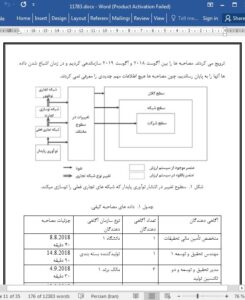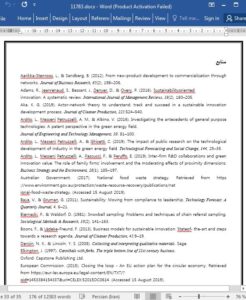Abstract
Sustainable innovations in food packaging are important in terms of preventing food waste and reducing environmental impact, but existing industry regimes and networks may hinder their diffusion into established markets. However, research on reorientation of existing industries, and value networks in that situation, has been limited. This study examines the changes to existing industry value networks that can facilitate the diffusion of sustainable innovation in food packaging. Empirically, the transformation and distribution of agro-food waste into a new bioplastic packaging through the existing food packaging value network is investigated. As a result, the changes to the existing value network and their connections, facilitating the diffusion of the sustainable innovation, are identified at three levels – firm, network, and macro. The findings show the importance of opportunity recognition, but also the role of new actors, resources, activities, and relationships in the restructuring of the existing value network and actions creating supportive regulative framework and increasing market demand for such renewal. This creates understanding of how the adoption of sustainable innovations, such as new packaging materials, which might seem simple, is complicated by the broad changes required from the existing value network.
1. Introduction
Food waste has significant environmental, social, and economic impacts (Papargyropoulou, Lozano, Steinberger, Wright, & bin Ujang, Z., 2014). It is estimated that one-third of food produced globally is either lost or goes to waste (FAO, 2019), before and after it reaches the consumer. Food waste has thus become a public concern (FAO, 2019) that requires urgent preventative actions from the whole food supply chain (Papargyropoulou et al., 2014), as well as from the regulatory agencies to support sustainable production and consumption (e.g., Australian Government, 2017; European Commission, 2015). In the food industry, a prominent way to prevent food waste is packaging that can protect food products (Lockhart, 1997) from external damages and extend their shelf life (Klewitz & Hansen, 2014). Innovations in package materials and manufacturing processes to better preserve the quality and freshness of food products during their distribution and storage are thus important (Parfitt, Barthel, & Macnaughton, 2010). Specifically, the demand for more sustainable package innovations has increased due to the environmental problems related to packaging.
5.3. Limitations and future research avenues
The present study employs data depicting the changes that could facilitate the diffusion of bioplastics as a packaging material innovation within the food industry and in its existing value networks. Therefore, the findings should be considered as specific to the food packaging value chain setting and applicable in other industry contexts with similarities in existing value networks and industry regimes. For example, in food packaging, various health and consumer protection regulations, and a long-standing dominant role of conventional plastics and related network actor bonds may influence the actors’ attitudes towards the innovation and the sustainability diffusion in the networks. In addition, as our data includes informants from different national contexts, cultural aspects may affect the behaviors of the actors, and we acknowledge the potential role of the culturally related communication inconsistencies as well.











